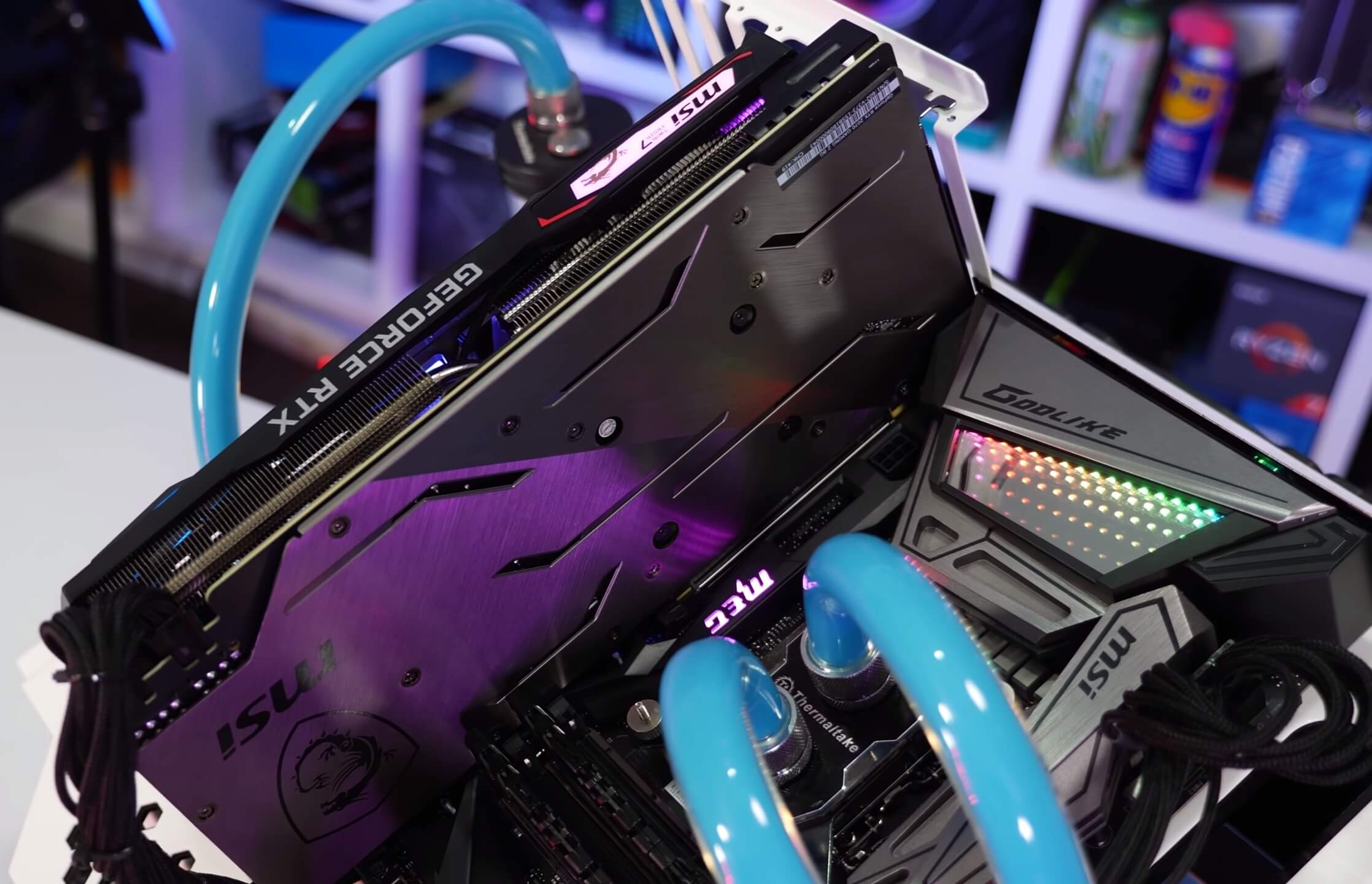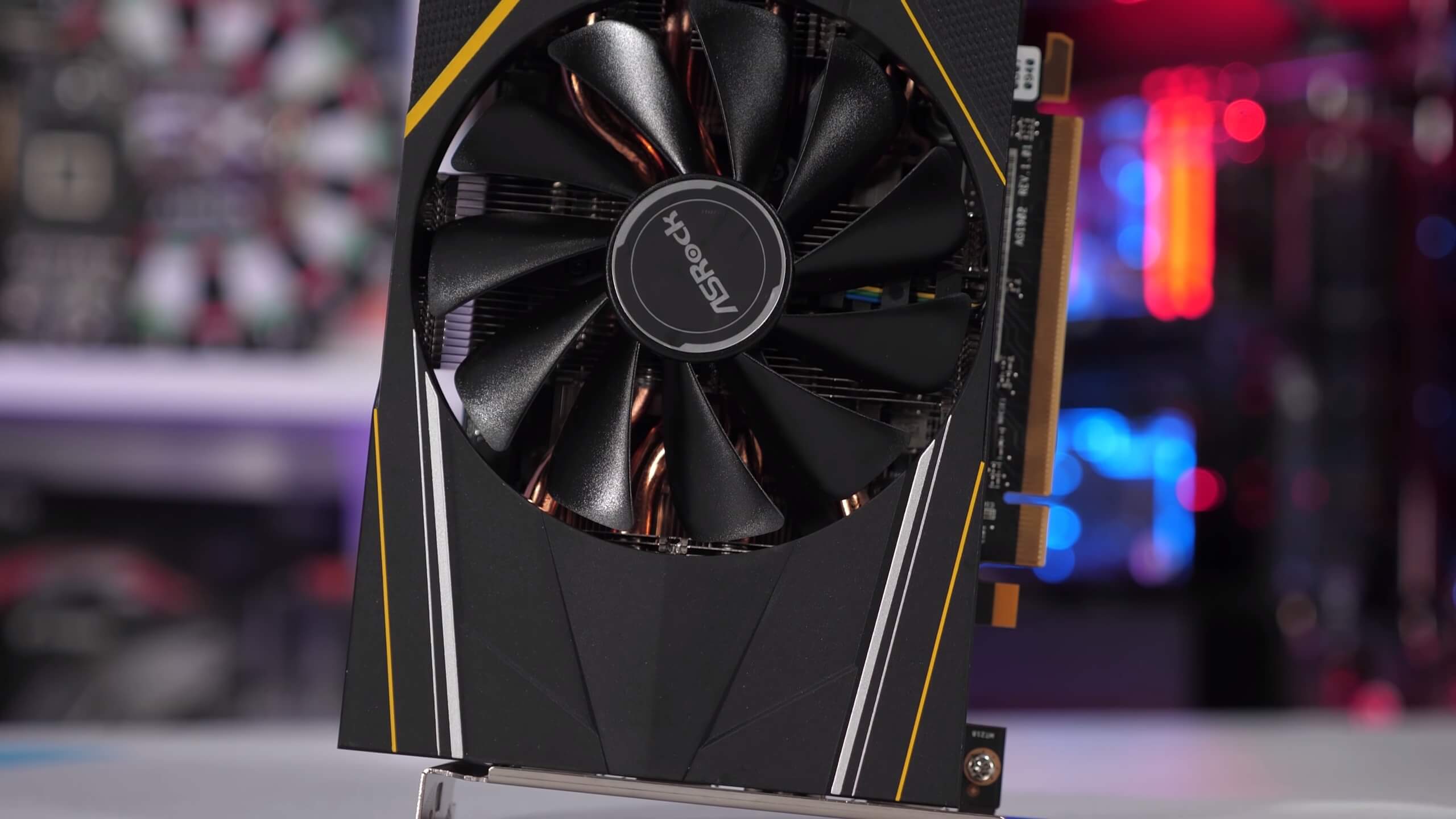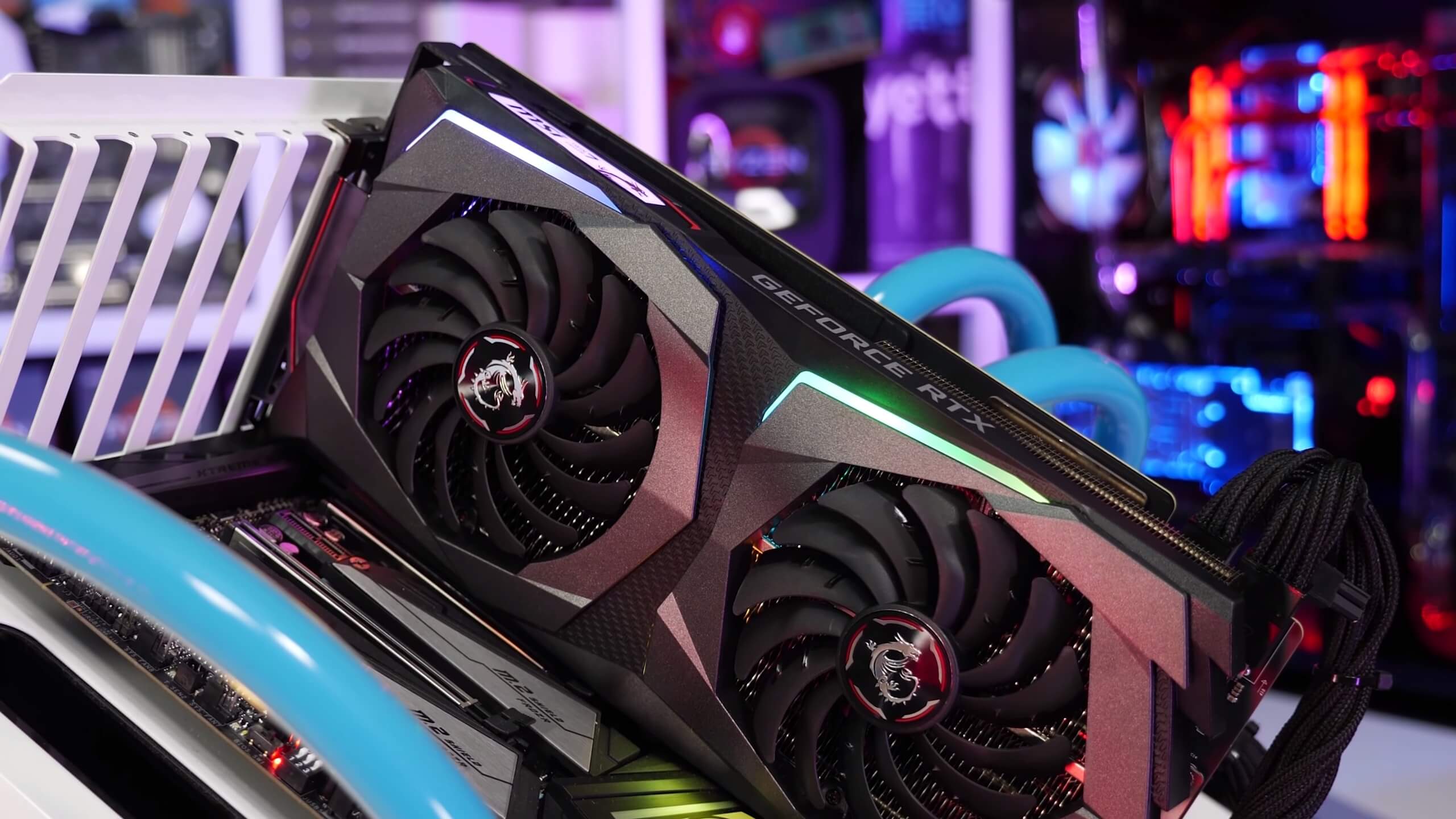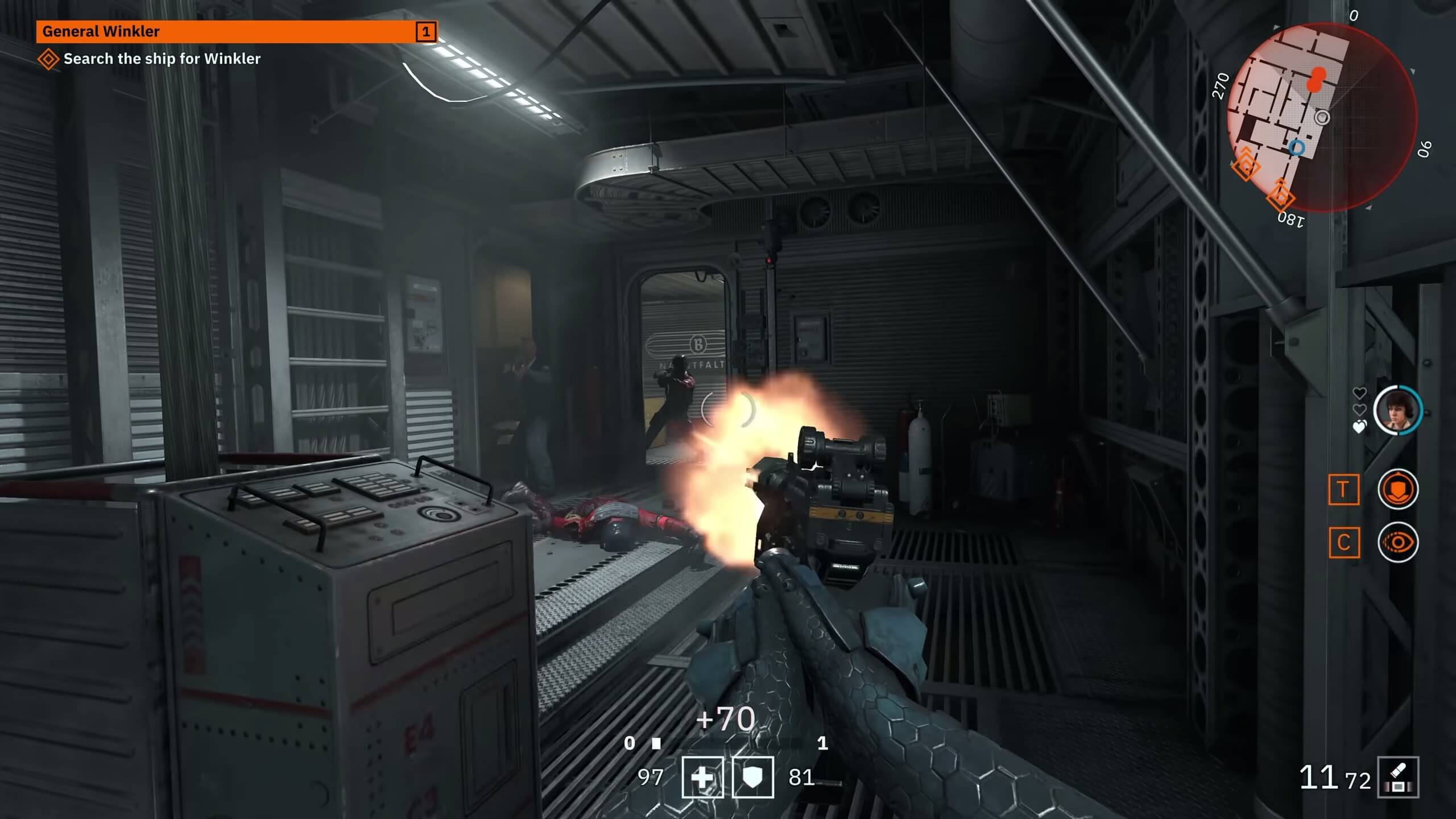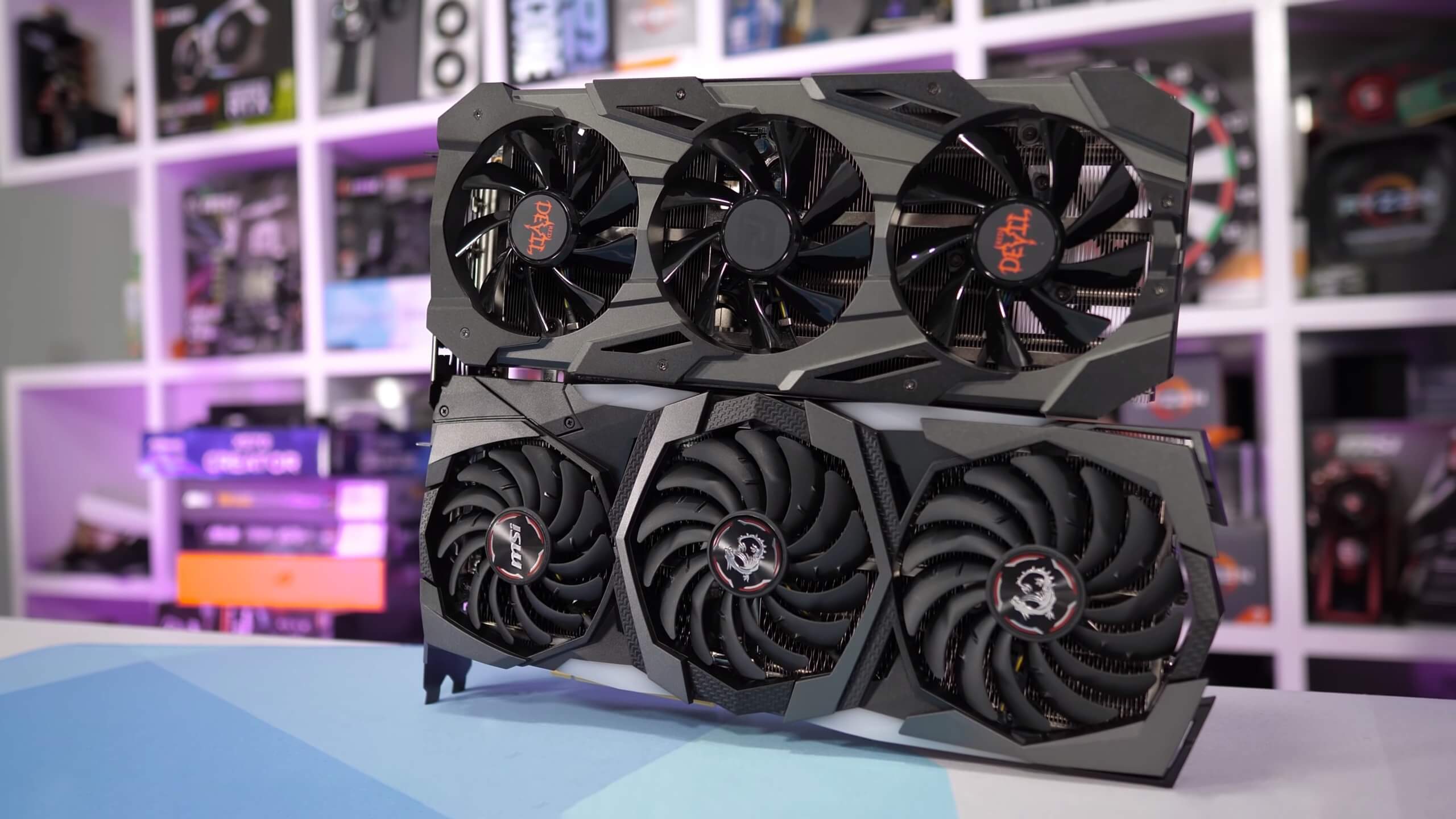For those of you that missed it, last week we revisited the battle between the current-gen $400 GPUs: the Radeon RX 5700 XT and GeForce RTX 2060 Super. Since we tested them both at launch nearly seven months ago, we've seen new drivers, new games and game updates, yet we found a very similar situation that can be summarized as a slight performance advantage going the way of the Radeon GPU, to the tune of 8% faster on average at 1440p gaming.
Coming away from that review two things were clear: many of you wanted an update between the 5700 XT and the more expensive RTX 2070 Super, as well as the inclusion of DLSS results for the games that support the much improved DLSS 2.0. So today we're going to include both of those things.
To put things in proper perspective before we begin, the RTX 2070 Super is the more expensive GPU starting at around $500, while the 5700 XT comes in at $400 and up, making the Radeon at least 25% cheaper.
In addition to the 2070 Super, we've added the original RTX 2070 to the mix as many readers were also requesting this. We've tested 35 games in total for this comparison and we'll show you DLSS results for the 2060 Super, 2070 and 2070 Super in Control and Wolfenstein: Youngblood.
All tests were conducted using our Core i9-9900K GPU test system clocked at 5 GHz with 16GB of DDR4-3400 memory. We're covering 1080p and 1440p resolutions although the focus of the discussion will be on the 1440p data. Let's get into the results...
Benchmarks
First up we have Call of Duty: Modern Warfare. This was a clear win for the 5700 XT over the 2060 Super as it offered 22% more frames at 1440p. Surprisingly, even when compared to the RTX 2070 Super, the 5700 XT is the superior performer, even if it's just by a 5% margin. This is a truly impressive result for AMD given how much cheaper the Radeon GPU is.
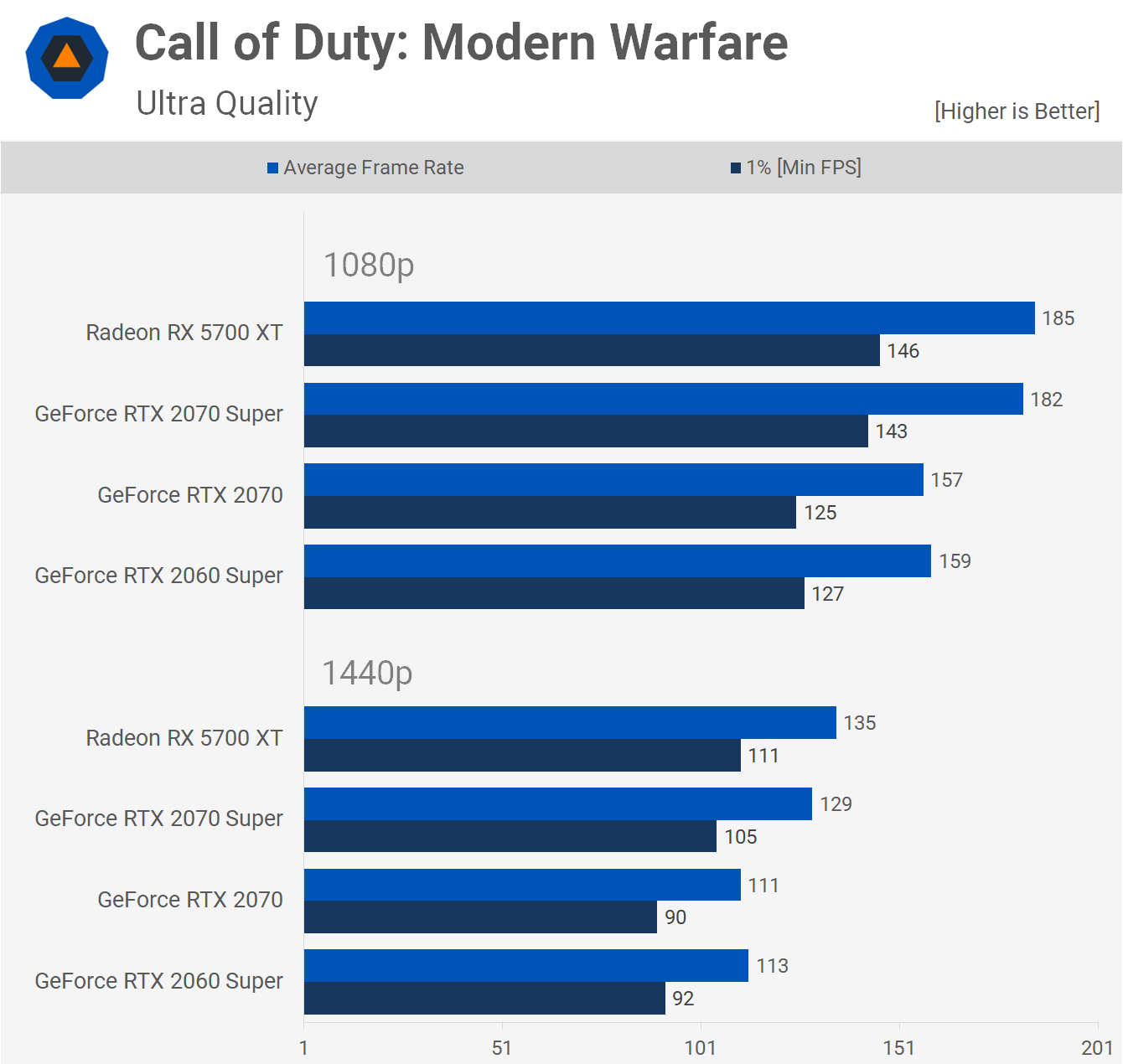

The 2070 Super is able to pull ahead in Ghost Recon Breakpoint making it 7% faster than the 5700 XT at 1440p. Notably though, the 1% low performance in the GeForce was quite a bit better at 16% faster.

The 5700 XT and RTX 2070 Super are neck and neck in Shadow of the Tomb Raider, delivering 87 fps on average at 1440p. The original 2070 and 2060 Super are also a match and it appears as though the increased clock frequency of the 2060 Super cores makes up for having less of them.

Performance was competitive in Gears 5, here the 5700 XT edged ahead at 1080p while the 2070 Super managed to push itself into the lead at 1440p by a slim margin. This is another title where the Radeon GPU is able to punch above its weight class.

Moving on to Control, this is one of the games with DLSS 2.0 support and we'll check out those results soon. For now here is native 1080p and 1440p performance. The 5700 XT just manages to edge out the 2060 Super in Control while the 2070 Super is 16% faster at 1440p. This won't fully justify the 25% increase in price, but perhaps enabling DLSS will help here.

Next up we have Metro Exodus and here the 5700 XT easily beats the 2060 Super. So much so that it's able to match the 2070 Super as well. Technically the Radeon GPU performs better in this title with more consistent frame time performance, for whatever reason the 2070 Super struggled to improve upon the 1% low result of the standard 2070 and 2060 Super.

In Resident Evil 3, the 2070 Super is able to edge out the 5700 XT beating it by a 7% margin at 1440p. Here the 5700 XT performs closer to the 2070 Super than it does the 2060 Super, so this is remains a good result for AMD.

Nvidia puts up a much more convincing fight in Doom Eternal, beating the 5700 XT with the 2070 Super by a 21% margin.

Another game where the 5700 XT only managed to match the 2060 Super is Fortnite using the DX12 mode. Both $400 GPUs average around 90 fps, while the 2070 Super is 17% faster, averaging just over 100 fps.
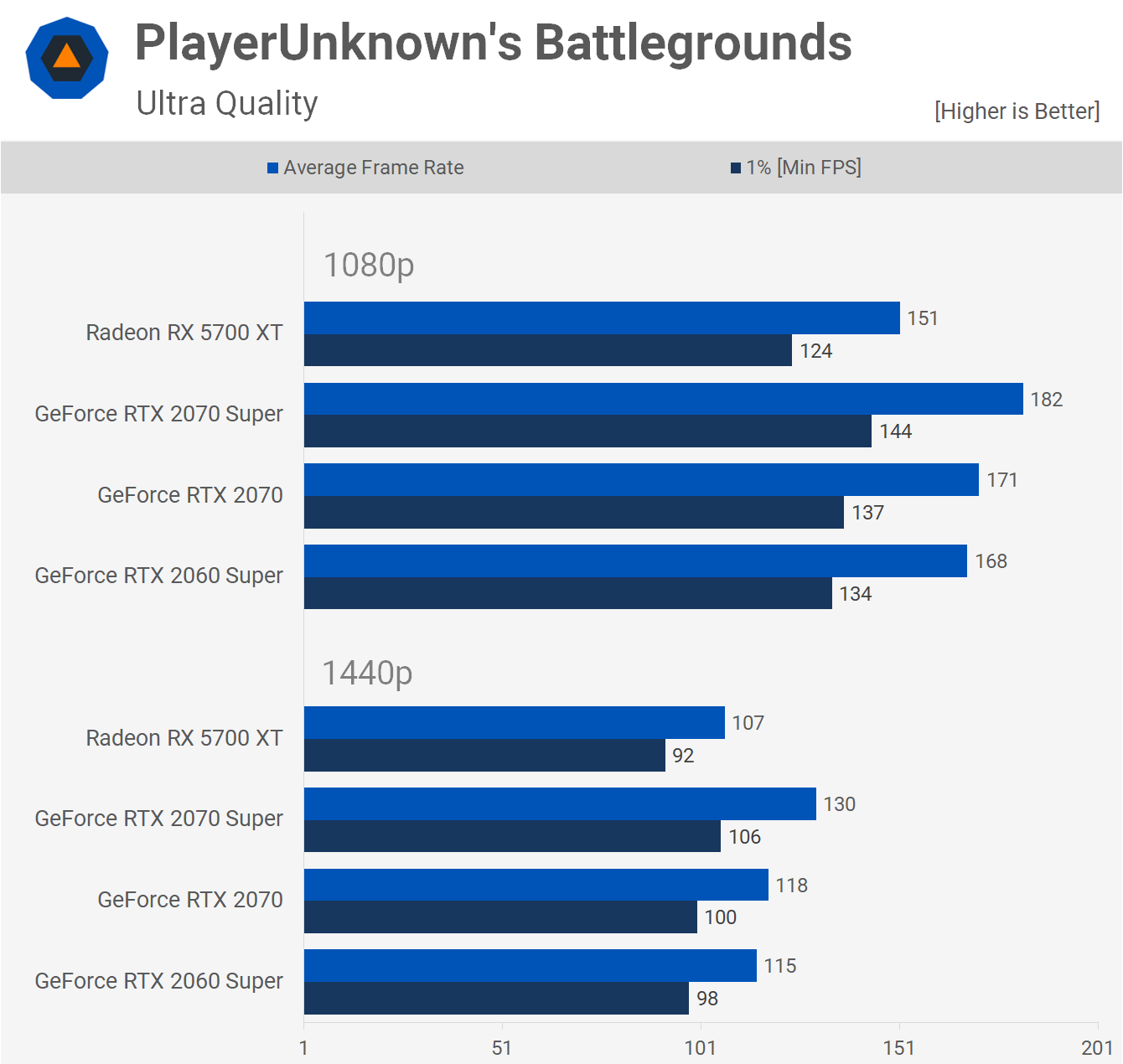
PUBG is another game where Radeon performance is a bit iffy, performing a tad below the RTX 2060 Super. Frame rates for the 5700 XT relative to the GeForce competition are much worse in this title, here the RTX 2070 Super is 21% faster.
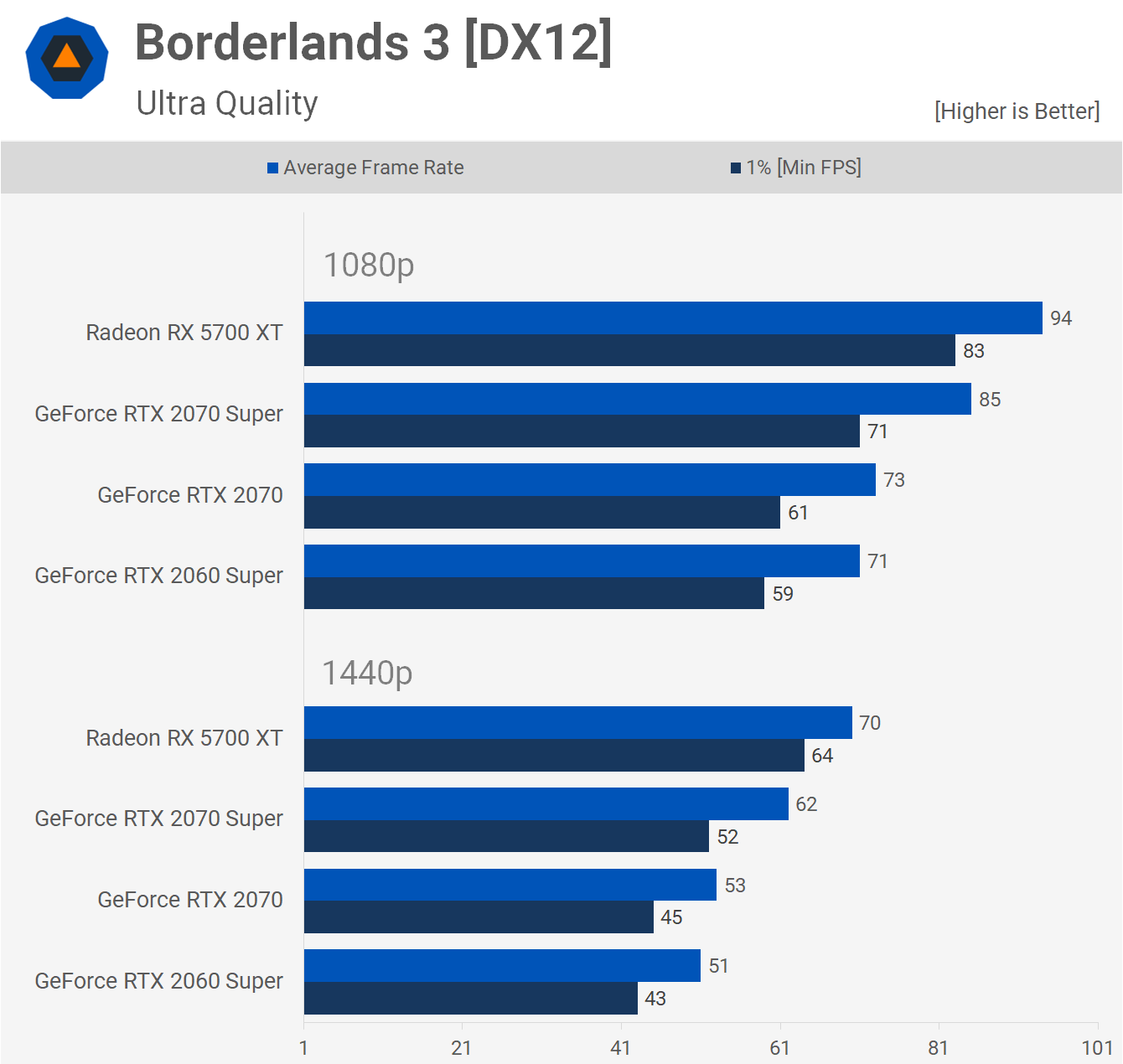
Borderlands 3 has become an AMD special, much like what Forza Horizon 4 was for quite some time. It's a major outlier in our testing but the results are accurate, The 5700 XT is a whopping 32% faster than the 2060 Super and 13% faster than the 2070 Super. Whatever optimizations were done here, clearly they are working.

Finally, we have Battlefield V, where the 5700 XT is able to match the 2070 Super with an average of 100 fps at 1440p. This is a great showing from the $400 Radeon GPU and stellar frame rates for a title that looks so good at 1440p.
Performance Breakdown
Overall you can tell the GeForce RTX 2070 Super was faster most of the time, but considering the difference in price it certainly looked as though the Radeon RX 5700 XT kept holding its own. The performance breakdown graphs below have the full list of 35 games we tested.
Looking at the full 1080p data first, the Radeon GPU 5700 is 6% slower than the 2070 Super, suffering it's biggest loses in The Outer Worlds, War Thunder, Vermintide 2, Doom Eternal and PlayerUnknown's Battlegrounds.

It's also worth noting that in 15 of the 35 games tested the margin was 5% or less.

When testing at 1440p the margin is increased by a single percent, so the RTX 2070 is about 7% faster than the 5700 XT. This is basically the same margin we observed between the two GPUs 7 months ago when we first tested them in a comparison review. There's been some changes to the games used for testing and the margins in a few titles have changed, but at the end of the day we end up with a similar result.
But what if we enabled DLSS in Control and Wolfenstein: Youngblood?
DLSS, Anyone?
Enabling DLSS in Control we see massive gains and please note this is the quality DLSS mode as we're running the highest possible DLSS resolution at 1440p.
Frame rates for the 2070 Super were improved by 66% and 60% for the 2060 Super. This means the 2060 Super is now 48% faster than the 5700 XT while the 2070 Super is an obscene 93% faster.
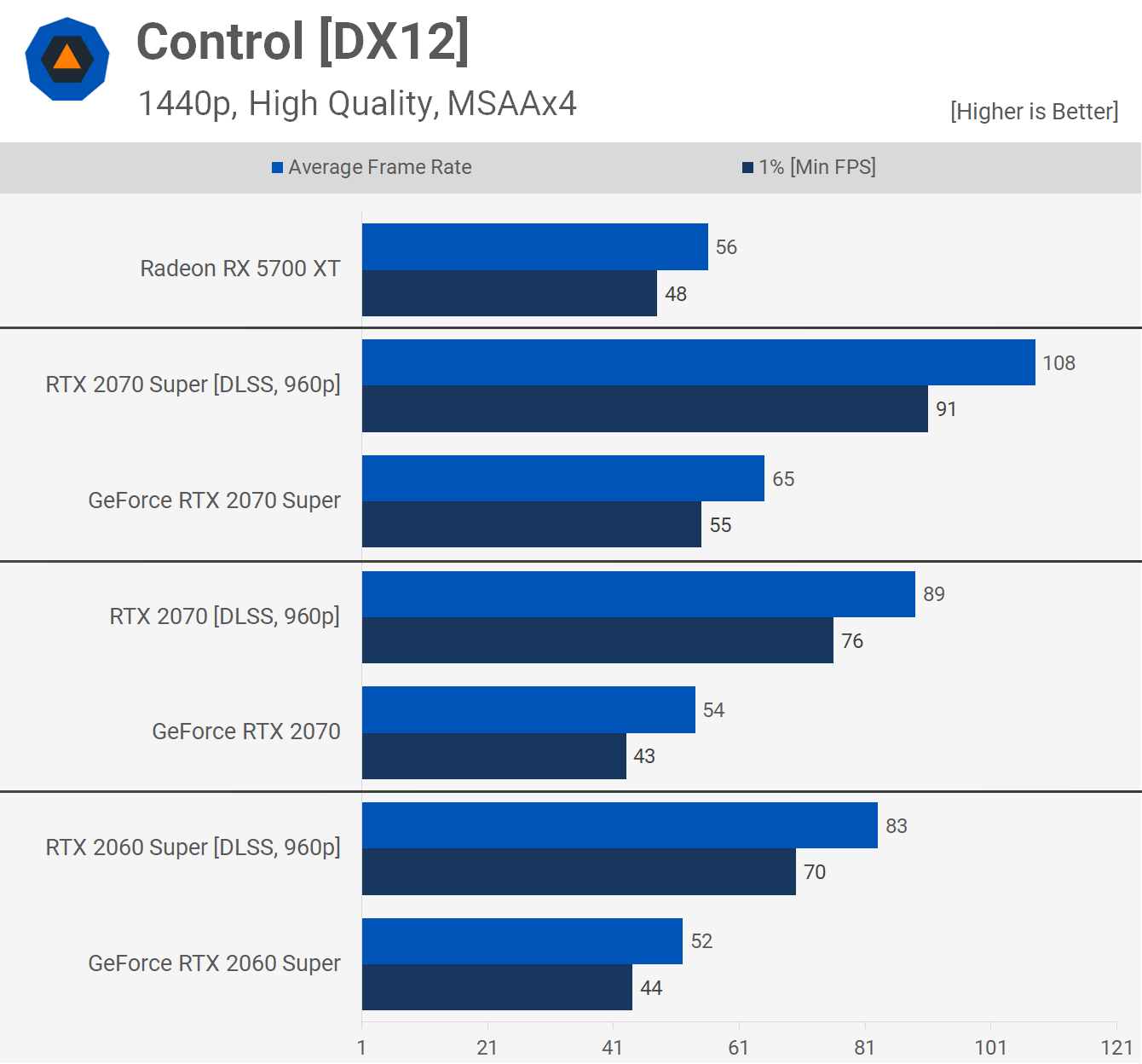
Taking into account we're talking about comparable image quality between the 5700 XT and 2070 Super using DLSS, this is a devastating result for the Radeon. The only problem for Nvidia and current RTX owners is that for now, a mere 4 games support DLSS 2.0.
We also tested Wolfenstein: Youngblood and here DLSS has far less impact on performance. This may be because frame rates were already very high to begin with. DLSS 2.0 still takes a certain amount of time to compute and this creates a bit of a bottleneck for higher-end GPUs, or in games that don't require loads of rendering power such as Youngblood.
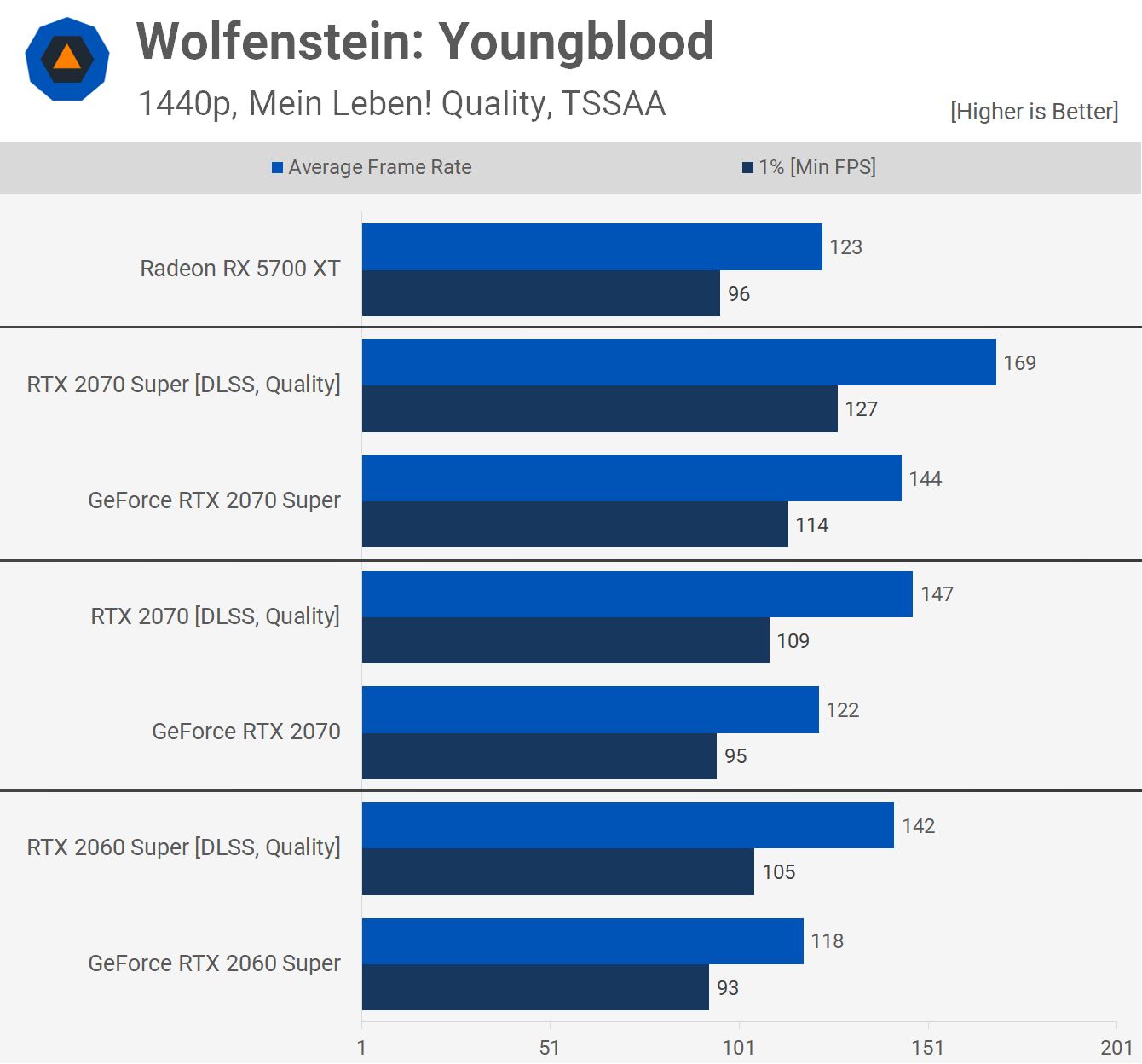
That's not to say we didn't see a performance uplift. The 2070 Super saw a 17% jump and given we're not seeing any noticeable reduction in image quality – under close scrutiny we'd say it's exactly the same – this is a big win for DLSS.
The RTX 2060 Super was slower than the 5700 XT without DLSS, enabling it in this game allows the GeForce GPU to take the lead by a 15% margin. The 2070 Super is now also 37% faster, in a convincing win for the green team with DLSS enabled.

Taking into account those big DLSS-enabled gains in Wolfenstein and Control, the 5700 XT is now 9% slower on average at 1440p when compared to the RTX 2070 Super.
Evidently, for DLSS to cripple AMD and have a more meaningful impact for RTX owners, Nvidia needs to drastically improve game support. We're not sure when and if that's going to happen, but for now it's an impressive technology that works well in the few games we've tested.
What We Learned
Nvidia has done a great job of reinventing what DLSS is and how it works. They have without question come a long way from those horribly blurry initial implementations, so kudos to them. The problem is now game support, we need a lot more of it, but we believe you'll only see DLSS support in Nvidia sponsored titles (Nvidia GameWorks) and if that is the case, not enough games will see DLSS support. The fact that AMD is powering next-gen consoles from Sony and Microsoft is not an encouraging sign either, but we'll just have to wait and see.
When looking at today's pricing, the GeForce costs 25% more with most cards on retail starting around $520 and up, while we could also find plenty of 5700 XT's available around the $400 MSRP or slightly above it for the better equipped models, which we fully recommend.
In terms of value, the 2070 Super can't reach the levels of the Radeon 5700 XT. But if you prioritize performance then the Nvidia GPU can be the better choice. For those of you wanting to game at 4K in particular, the 2070 Super is worth spending the extra $100, as the 9% boost it offers on average does typically translate into a better gaming experience.
Bottom line, while we think the 5700 XT is somewhat of an obvious choice when compared to the similarly priced 2060 Super, the right choice is less obvious when comparing with the RTX 2070 Super. For most gamers targeting 1080p or 1440p the Radeon RX 5700 XT offers the best value, but if you're seeking maximum performance at 1440p or beyond, then the 2070 Super might be worth spending a little extra on. Either way you can't go wrong as both GPUs deliver exceptional performance.
